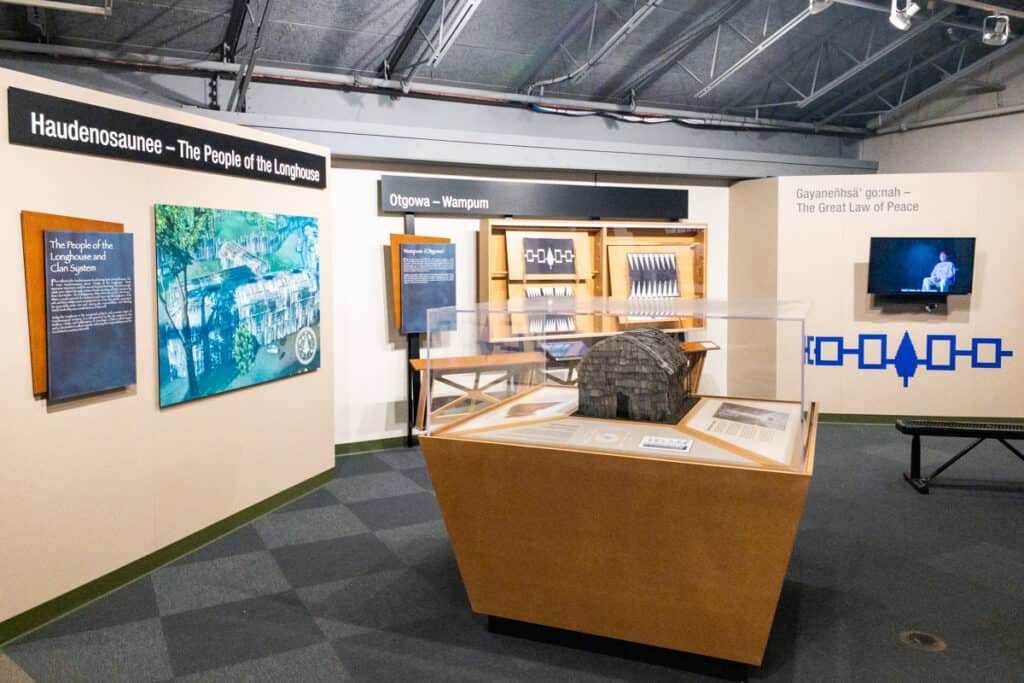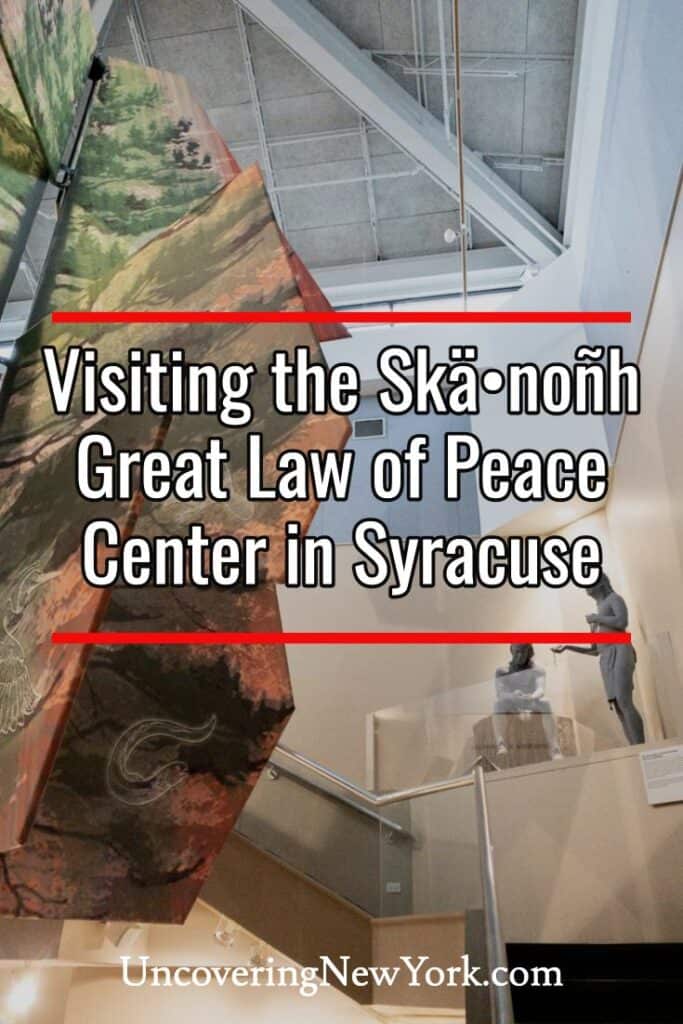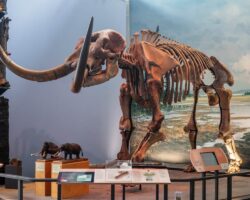New York has a rich Native American history, and while I’ve already visited some great spots that tell this history, I was excited when I had a chance to visit the Skä•noñh Great Law of Peace Center in Syracuse, NY.
The Skä•noñh (roughly pronounced “skah no” to rhyme with piano) is a greeting in the Onondaga language that means “peace and wellness”. And the center helps to tell the story and history of the Haudenosaunee, a six-tribe alliance better known today as the Iroquois.
The Skä•noñh Great Law of Peace Center can be found just north of downtown Syracuse on the edge of Onondaga Lake Park, home to the Salt Museum and the festive Lights on the Lake. It opened to the public in November 2015 with a newly built museum adjacent to a small recreated area known as the Sainte Marie Mission Site.

The mission site, also known as Sainte Marie Among the Iroquois or simply the French Fort, was originally built in the 1930s, though it was quite inaccurate historically. Updates were made in the 1990s to bring it more in line with what a French Jesuit Mission would have been like.
The mission site was originally run by the park but is now managed by the Onondaga Historical Society which also runs the museum (as well as a museum in downtown Syracuse that tells the city’s history).
The mission is open the same hours as the museum, though, unlike the museum, which is open year-round, the mission is only open from May through October. Sadly, since I visited in December, I was unable to visit the mission, but that just gives me a good excuse to visit again in the future.
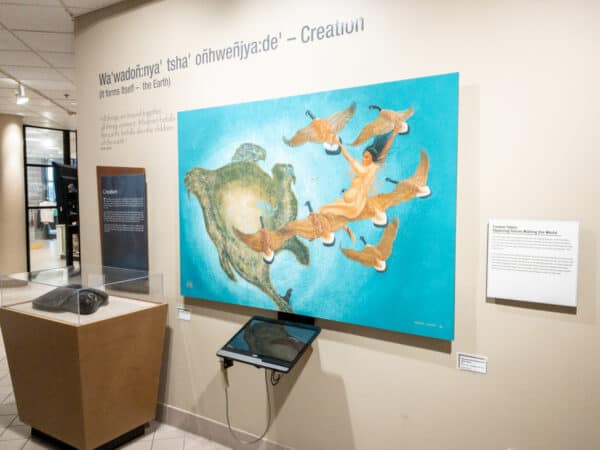
Inside the museum itself, there is a lot of fabulous information on the history of the Haudenosaunee, from their creation story all the way through to the modern day.
Their story is told primarily through videos, signage, and photos, though there are models and dioramas scattered around the two floors of displays that help bring things to life.
The suggested route through the museum takes you through a portion of the first floor before heading to the exhibits upstairs. Then, you finish with the second half of the downstairs display areas.
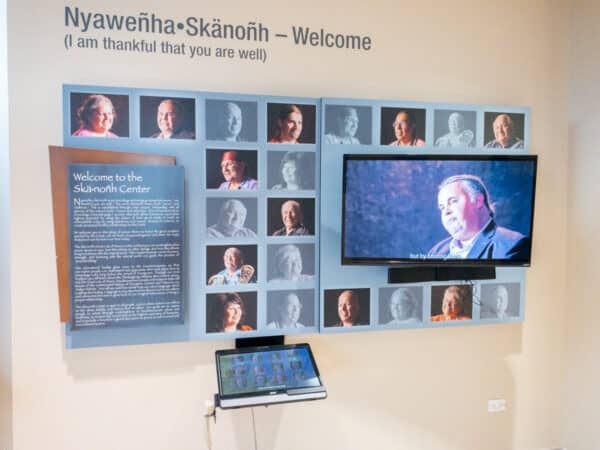
The first displays downstairs are video overviews. These cover topics like who the Haudenosaunee are and their history. There is also a really interesting video that highlights their creation story.
Even having previously visited Ganondagan State Historic Site near Rochester, which covers much of this same introductory information, I still found these videos interesting and worth seeing.
Upstairs, there are a large variety of displays that cover the history and culture of the Haudenosaunee. There’s even a model of one of their longhouses (similar to the life-size one at the aforementioned Ganondagan) and several mannequins set up to show what life was like in the past.
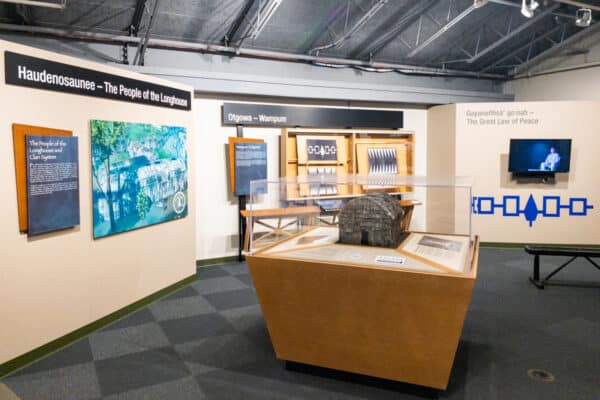
A large portion of the upstairs area covers the impact that European settlement had on the Haudenosaunee and their way of life. It was sobering reading the information presented here and really learning about the impact our European ancestors had on the lives of Native Americans.
The topics covered here ranged from the earliest days of contact with Europeans through to the 20th century, showcasing well the continuing impact on native cultures and history.
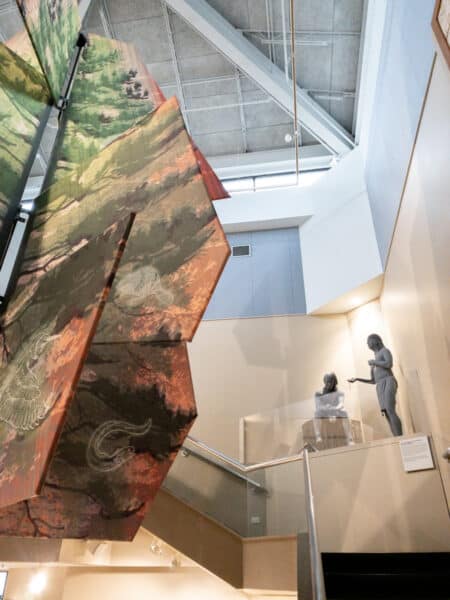
While the information here is sobering, I thought it was covered really well and done in a way that works well for adults but isn’t in any way inappropriate for children. This area alone makes the Skä•noñh Great Law of Peace Center worth visiting as it helps bring abstract concepts about settler-native conflicts to life.
Back downstairs, there is a gallery that highlights Haudenosaunee culture today, as well as the laws governing the tribes on their reservations (including one just south of Syracuse).
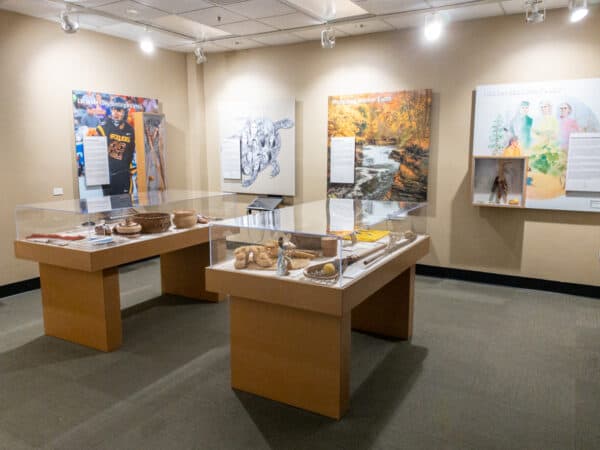
The section also highlights some of the Haudenosaunee’s contributions to American life, with a large focus on the game of lacrosse, which was first played by the Haudenosaunee for hundreds of years prior to the arrival of Europeans in North America.
Beyond this space, there is a temporary exhibition area. When I was visiting, they had a display about Native American depictions in media, which was really interesting to learn about from a Native American perspective. While this exhibition is no longer on display, there is sure to be a great exhibit during your visit that highlights an aspect of Haudenosaunee life.
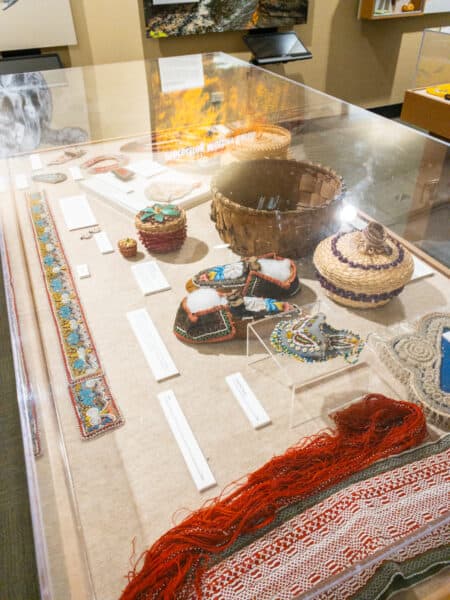
Overall, I really enjoyed my visit to the Skä•noñh Great Law of Peace Center in Onondaga County. The museum isn’t overly large but does an excellent job covering a bit of the history and culture of the Haudenosaunee people.
If you can, visit between May and October so you can also visit this mission site. However, even if you can only visit when that’s closed, this is still a great museum that’s well worth the cost of admission.
Ultimately, if you want to learn about the native peoples of New York, this is an excellent museum to check out when exploring the Finger Lakes.
Looking for more places to visit nearby? Check out the Erie Canal Museum, Fort Ontario, and the best breweries in Syracuse.

